How to Drive DC Motors with L6202 Full Bridge
STMICROELECTRONICS L6202 FULL BRIDGE DRIVER DMOS, 6202, DIP
Control DC motor direction and speed in your projects with the STMicroelectronics L6202 full bridge driver. Achieve safe, reliable motor operation easily.
Product Introduction
You can control a DC motor with the STMicroelectronics L6202. This chip lets you drive a motor in either direction and change its speed. When you drive a DC motor, you need to watch the wiring and use PWM for smooth speed changes. The STMicroelectronics L6202 helps you protect your motor and drive it safely. You can set the direction and speed for your motor with simple controls. Many people use this setup to drive DC motors in projects.
STMicroelectronics L6202 Overview
The STMicroelectronics L6202 gives you a reliable way to drive servo motors and DC motors in your projects. This chip uses Multipower-BCD technology, which helps you get high performance and strong torque from your servo system. You can use the L6202 in many servo applications that need precise control and high torque. The chip comes in a DIP-18 package, so you can mount it easily on your board. You can use it for both small and large servo motors. The L6202 works well in any system that needs a flexible h-bridge for motor control.
Features
You get many features with the STMicroelectronics L6202. The chip supports two channels of h-bridge output, so you can control two servo motors or one DC motor with full h-bridge action. You can use it in a servo system that needs fast switching and high torque. The L6202 gives you overcurrent protection, so your servo motors stay safe during operation. You can use it in a system that needs a wide supply voltage range, from 12 V to 48 V. The chip also has a low Rds On value, which helps your servo motors run cooler and more efficiently. You can use the L6202 in any servo application that needs reliable h-bridge control.
Tip: The L6202 works well in servo applications that need high torque and precise control. You can use it in a servo system for robotics, automation, or smart home devices.
Here is a quick look at the main electrical specifications:
| Specification | Value |
|---|---|
| Manufacturer | STMicroelectronics |
| Package | 18-DIP (7.62 mm) |
| Output Configuration | Half Bridge (2 channels) |
| Load Type | Inductive |
| Technology | BCDMOS |
| Typical Rds On | 300 mOhm |
| Output Current per Channel | 1.5 A |
| Supply Voltage Range | 12 V to 48 V |
| Load Voltage Range | 12 V to 48 V |
| Operating Temperature | -40°C to 150°C (junction) |
| Features | Bootstrap Circuit |
| Fault Protection | Over Temperature |
| Mounting Type | Through Hole |
| Package / Case | 18-DIP (PowerDIP) |
Applications
You can use the STMicroelectronics L6202 in many servo applications. The chip fits well in any system that needs h-bridge control for servo motors. Here are some common applications:
Industrial automation systems
Electric vehicles that use servo motors for movement
High-precision machine tools with servo control
Aerospace servo systems
Consumer electronics like printers and scanners with servo motors
Small motor drives for smart home devices
Low power mechanical equipment that needs servo control
Robotic arms with servo motors
Automated doors using servo motors
Automotive systems such as window lifts and seat adjustments with servo motors
You can use the L6202 in any servo application that needs reliable h-bridge control. The chip helps you get high torque and smooth performance from your servo motors. You can build a servo system that works in many fields, from robotics to smart homes. The L6202 gives you the flexibility to design servo applications that need precise control and strong torque.
H-Bridge Working Principle
The h-bridge is a key part of any system that needs to drive a DC motor in both directions. You can use the h-bridge circuit in the L6202 to change the direction of current through the motor. This lets you control whether the motor rotates forward or backward. The h-bridge operation gives you full control over motor rotation, making it perfect for robotics, automation, and other systems.
Current Flow
In an h-bridge circuit, you have four switches arranged in an "H" shape. The motor sits in the middle of the "H." When you turn on one pair of switches (for example, the top left and bottom right), current flows through the motor in one direction. This makes the motor rotate forward. If you switch on the other pair (top right and bottom left), the current flows the other way, and the motor rotates backward. The L6202 uses DMOS transistors as these switches. You can control which switches turn on by sending signals to the L6202. This setup lets you reverse the current flow and change the direction of the motor easily.
Tip: Always make sure you never turn on both switches on the same side of the h-bridge at the same time. This can cause a short circuit and damage your system.
Direction Control
You can control the direction of your motor by changing which switches in the h-bridge circuit are on. The L6202 gives you two input pins (IN1 and IN2) for each channel. By setting these inputs high or low, you decide which pair of DMOS transistors will conduct. If you set IN1 high and IN2 low, the motor rotates in one direction. If you swap the inputs, the motor rotates in the opposite direction. This simple logic makes it easy to control motor rotation in your system. The h-bridge also lets you stop the motor by turning off all switches or by shorting both motor terminals together. This level of control helps you build a safe and flexible system for any project that needs precise motor movement.
Wiring and Connections
Connecting the L6202 to your dc motor and microcontroller is a key step. You need to follow the correct wiring to make sure your system works safely and efficiently. This section will help you understand the pinout and show you how to set up the interface for your project.
Pinout
The L6202 comes in an 18-pin DIP package. Each pin has a special function. You must know what each pin does before you start wiring. Here is a table that shows the main pins you will use to drive your dc motor:
| Pin Number | Name | Function |
|---|---|---|
| 1, 18 | OUT1, OUT2 | Connects to the dc motor terminals |
| 2, 17 | VS | Supply voltage for the motor |
| 3, 16 | GND | Ground |
| 4, 15 | IN1, IN2 | Logic inputs for direction control |
| 5, 14 | EN | Enable pin for the bridge |
| 6, 13 | SENSE | Current sense for protection |
| 7, 12 | VREF | Reference voltage for current limit |
| 8, 11 | NC | Not connected |
| 9, 10 | Bootstrap | For high-side driver operation |
Note: Always check the datasheet for your exact L6202 model. Pin numbers may change for different packages.
You will use OUT1 and OUT2 to connect to the two terminals of your dc motor. The VS pins connect to your main power supply. The GND pins go to your system ground. IN1 and IN2 let you control the direction of the motor. The EN pin enables or disables the bridge. SENSE pins help you monitor the current and protect your circuit.
Motor and Microcontroller Interface
You can connect the L6202 to your microcontroller and dc motor by following these steps:
Connect the Power Supply:
Attach the VS pins to your dc power source. Make sure the voltage matches your dc motor’s rating. Connect the GND pins to your system ground.Wire the Motor:
Connect one terminal of your dc motor to OUT1. Connect the other terminal to OUT2. This setup lets you drive the motor in both directions.Connect the Logic Inputs:
Link IN1 and IN2 to two digital output pins on your microcontroller. These pins will control the direction of the dc motor. Connect the EN pin to another digital output. You can use this pin to enable or disable the drive.Set Up Current Sensing:
Place a low-value resistor (like 0.5Ω) between the SENSE pin and ground. This resistor helps you measure the current and protect your dc motor from overcurrent.Add Bootstrap Capacitors:
Connect small capacitors (like 100nF) between the bootstrap pins and OUT1/OUT2. These capacitors help the high-side drivers work well.Use Snubber Circuits:
Place a snubber circuit (a resistor and capacitor in series) across the motor terminals. This circuit absorbs voltage spikes when you switch the drive on and off. It protects both the L6202 and your dc motor.Connect to Microcontroller Ground:
Make sure the ground of your microcontroller connects to the ground of the L6202. This step ensures proper logic levels for control.
⚡ Tip: Keep your wiring short and neat. Long wires can pick up noise and cause problems with your dc motor drive.
Here is a simple wiring diagram for reference:
Microcontroller | | | IN1 IN2 EN | | | | | | L6202 ------------- VS (12-48V) | | | | | | OUT1 OUT2 SENSE GND Bootstrap | | | | | [DC Motor] [Current Sense Resistor]
You can now control your dc motor using your microcontroller. Send logic signals to IN1 and IN2 to set the direction. Use PWM on the EN pin to control the speed. The L6202 will drive the motor smoothly and safely.
Note: Always double-check your connections before powering up. Wrong wiring can damage your dc motor or the L6202.
Drive Control and Programming
You can use the L6202 h-bridge to drive a dc motor with precise direction and speed. This section will help you set up your servo motor system for high torque and accurate position control. You will learn how to use PWM signals to control both direction and speed. You will also see how to write Arduino code for safe and reliable operation.
Direction with PWM
You can change the direction of your servo motor by setting the logic levels on the IN1 and IN2 pins of the h-bridge. When you set IN1 high and IN2 low, the motor rotates in one direction. If you swap the signals, the motor rotates in the opposite direction. This simple method gives you full control over motor rotation in your servo system.
To drive your dc motor safely, you must avoid turning on both high-side and low-side switches on the same side of the h-bridge at the same time. This mistake can cause shoot-through and damage your system. Always set one input low before changing the other input to high. This safe switching sequence protects your servo motors and keeps your drive system reliable.
You can use PWM on the enable (EN) pin to control the speed while setting the direction with IN1 and IN2. The h-bridge lets you reverse the current flow through the dc motor, so you can drive the servo motor forward or backward. This setup works well for position control and torque control in a closed loop system.
Tip: Always check your logic signals before you power up your servo system. Safe switching prevents damage and improves performance.
Speed Control
You can control the speed of your servo motor by sending a PWM signal to the EN pin of the L6202 h-bridge. PWM stands for Pulse Width Modulation. This method turns the drive on and off very quickly. The average voltage across the dc motor changes with the duty cycle of the PWM signal. A higher duty cycle gives more speed and torque. A lower duty cycle reduces speed and torque.
In a servo system, you often use a current control loop and a position control loop. The current control loop helps you manage torque. The position control loop uses feedback from sensors to keep the servo motor at the right position. You can use feedback from encoders or potentiometers to improve accuracy. This feedback helps you build a high-performance servo system with stable speed and position control.
Here is a simple Arduino code example. This code lets you drive a dc motor with the L6202 h-bridge. You can set the direction and speed using digital and PWM signals.
// L6202 H-Bridge DC Motor Drive Example
const int IN1 = 8; // Direction control pin 1
const int IN2 = 9; // Direction control pin 2
const int EN = 10; // PWM speed control pin
void setup() {
pinMode(IN1, OUTPUT);
pinMode(IN2, OUTPUT);
pinMode(EN, OUTPUT);
}
void loop() {
// Drive forward at 75% speed
digitalWrite(IN1, HIGH);
digitalWrite(IN2, LOW);
analogWrite(EN, 191); // 75% of 255
delay(2000);
// Stop motor before changing direction
digitalWrite(IN1, LOW);
digitalWrite(IN2, LOW);
analogWrite(EN, 0);
delay(500);
// Drive backward at 50% speed
digitalWrite(IN1, LOW);
digitalWrite(IN2, HIGH);
analogWrite(EN, 128); // 50% of 255
delay(2000);
// Stop motor
digitalWrite(IN1, LOW);
digitalWrite(IN2, LOW);
analogWrite(EN, 0);
delay(1000);
}This code sets the direction with IN1 and IN2. It uses PWM on the EN pin to control speed. The code stops the motor before changing direction. This step prevents shoot-through and keeps your drive system safe.
⚡ Note: Always use feedback in your servo system for better position control and torque management. Feedback improves the performance of your servo motors and helps you reach the right position every time.
You can use this setup for many servo applications. You can drive servo motors in robotics, automation, and smart devices. The L6202 h-bridge gives you high torque, smooth speed, and accurate position control. You can build a reliable servo system with closed loop feedback for the best performance.
Troubleshooting and Safety
Common Issues
When you drive a DC motor with the L6202, you may face some common problems. Knowing these issues helps you keep your system safe and working well.
You may see current spikes when you switch the direction of your motor. These spikes can damage the drive, especially if you use a high supply voltage.
The built-in dead time in the L6202 is short. If you change direction too quickly, the system may not have enough time to recover. This can cause shoot-through and destroy the drive.
Sometimes, the motor creates back EMF during fast reversals. This can push the supply voltage above safe levels and damage the system.
You might notice overheating if you run the drive at high current for a long time. This can lead to internal shorts between outputs, supply, and ground.
Voltage spikes can appear when you stop or reverse the motor quickly. These spikes can harm both the drive and the motor.
⚠️ Tip: Always wait a few hundred milliseconds before changing direction. This pause helps protect your drive and keeps your system safe.
Protection Tips
You can use several features to protect your drive and motor. The L6202 offers built-in tools to help you monitor and guard your system. Here is a table of important protection features:
| Feature | Description |
|---|---|
| Programmable Overcurrent Detection | Lets you set current limits for your system |
| Diagnostic Output | Shows real-time fault status for your drive |
| Cross Conduction Protection | Stops short circuits inside the drive |
| Thermal Shutdown | Turns off the drive if it gets too hot |
| Undervoltage Lockout | Keeps the system off if voltage is too low |
You should always use a current sense resistor to watch the current in your system. This helps you spot problems early. Use braking resistors or snubber circuits to handle voltage spikes. Make sure you connect the feedback from your position control sensors to your system. Good feedback helps you keep your drive safe and your motor running smoothly. Always double-check your wiring before you power up the system.
🛡️ Note: Safe wiring and strong feedback are key to a reliable drive. Good protection keeps your position control system working for a long time.
You can drive a servo motor with the L6202 by wiring the chip, connecting your microcontroller, and programming direction and speed. The L6202 gives you strong torque and smooth control for servo motors in any servo project. You get these benefits:
The L6202 protects your servo motor from faults and meets strict safety standards.
You can drive servo motors with high voltage and current, which gives you more torque.
The flexible H-bridge design lets you use the L6202 in many servo motor drive setups.
Try these steps in your own servo system. If you want to learn more, explore advanced servo motor control and feedback methods.
FAQ
How do you choose the right power supply for the L6202?
You should match the supply voltage to your motor’s rating. The L6202 works best with 12V to 48V. Always check your motor’s datasheet before connecting power.
Can you use the L6202 with Arduino or Raspberry Pi?
Yes, you can connect the L6202 to Arduino or Raspberry Pi. Use digital pins for IN1, IN2, and EN. Make sure you connect all grounds together for proper operation.
What happens if your motor draws too much current?
If your motor draws too much current, the L6202’s overcurrent protection will activate. This feature helps prevent damage. You should also use a current sense resistor for extra safety.
Do you need heatsinks for the L6202?
You may need a heatsink if your motor uses high current or runs for a long time. The chip can get hot. A heatsink helps keep it cool and safe.
How do you stop voltage spikes from damaging your circuit?
Add a snubber circuit or flyback diode across the motor terminals. This setup absorbs voltage spikes and protects both the L6202 and your motor.
Specifications
- TypeParameter
- Lifecycle Status
Lifecycle Status refers to the current stage of an electronic component in its product life cycle, indicating whether it is active, obsolete, or transitioning between these states. An active status means the component is in production and available for purchase. An obsolete status indicates that the component is no longer being manufactured or supported, and manufacturers typically provide a limited time frame for support. Understanding the lifecycle status is crucial for design engineers to ensure continuity and reliability in their projects.
ACTIVE (Last Updated: 8 months ago) - Factory Lead Time12 Weeks
- Mount
In electronic components, the term "Mount" typically refers to the method or process of physically attaching or fixing a component onto a circuit board or other electronic device. This can involve soldering, adhesive bonding, or other techniques to secure the component in place. The mounting process is crucial for ensuring proper electrical connections and mechanical stability within the electronic system. Different components may have specific mounting requirements based on their size, shape, and function, and manufacturers provide guidelines for proper mounting procedures to ensure optimal performance and reliability of the electronic device.
Through Hole - Mounting Type
The "Mounting Type" in electronic components refers to the method used to attach or connect a component to a circuit board or other substrate, such as through-hole, surface-mount, or panel mount.
Through Hole - Package / Case
refers to the protective housing that encases an electronic component, providing mechanical support, electrical connections, and thermal management.
18-DIP (0.300, 7.62mm) - Number of Pins18
- Weight4.535924g
- Operating Temperature
The operating temperature is the range of ambient temperature within which a power supply, or any other electrical equipment, operate in. This ranges from a minimum operating temperature, to a peak or maximum operating temperature, outside which, the power supply may fail.
-40°C~150°C TJ - Packaging
Semiconductor package is a carrier / shell used to contain and cover one or more semiconductor components or integrated circuits. The material of the shell can be metal, plastic, glass or ceramic.
Tube - JESD-609 Code
The "JESD-609 Code" in electronic components refers to a standardized marking code that indicates the lead-free solder composition and finish of electronic components for compliance with environmental regulations.
e3 - Part Status
Parts can have many statuses as they progress through the configuration, analysis, review, and approval stages.
Active - Moisture Sensitivity Level (MSL)
Moisture Sensitivity Level (MSL) is a standardized rating that indicates the susceptibility of electronic components, particularly semiconductors, to moisture-induced damage during storage and the soldering process, defining the allowable exposure time to ambient conditions before they require special handling or baking to prevent failures
1 (Unlimited) - Number of Terminations18
- ECCN Code
An ECCN (Export Control Classification Number) is an alphanumeric code used by the U.S. Bureau of Industry and Security to identify and categorize electronic components and other dual-use items that may require an export license based on their technical characteristics and potential for military use.
EAR99 - Resistance
Resistance is a fundamental property of electronic components that measures their opposition to the flow of electric current. It is denoted by the symbol "R" and is measured in ohms (Ω). Resistance is caused by the collisions of electrons with atoms in a material, which generates heat and reduces the flow of current. Components with higher resistance will impede the flow of current more than those with lower resistance. Resistance plays a crucial role in determining the behavior and functionality of electronic circuits, such as limiting current flow, voltage division, and controlling power dissipation.
300mOhm - Terminal Finish
Terminal Finish refers to the surface treatment applied to the terminals or leads of electronic components to enhance their performance and longevity. It can improve solderability, corrosion resistance, and overall reliability of the connection in electronic assemblies. Common finishes include nickel, gold, and tin, each possessing distinct properties suitable for various applications. The choice of terminal finish can significantly impact the durability and effectiveness of electronic devices.
Matte Tin (Sn) - Applications
The parameter "Applications" in electronic components refers to the specific uses or functions for which a component is designed. It encompasses various fields such as consumer electronics, industrial automation, telecommunications, automotive, and medical devices. Understanding the applications helps in selecting the right components for a particular design based on performance, reliability, and compatibility requirements. This parameter also guides manufacturers in targeting their products to relevant markets and customer needs.
DC Motors, General Purpose - Voltage - Supply
Voltage - Supply refers to the range of voltage levels that an electronic component or circuit is designed to operate with. It indicates the minimum and maximum supply voltage that can be applied for the device to function properly. Providing supply voltages outside this range can lead to malfunction, damage, or reduced performance. This parameter is critical for ensuring compatibility between different components in a circuit.
12V~48V - Terminal Position
In electronic components, the term "Terminal Position" refers to the physical location of the connection points on the component where external electrical connections can be made. These connection points, known as terminals, are typically used to attach wires, leads, or other components to the main body of the electronic component. The terminal position is important for ensuring proper connectivity and functionality of the component within a circuit. It is often specified in technical datasheets or component specifications to help designers and engineers understand how to properly integrate the component into their circuit designs.
DUAL - Number of Functions1
- Supply Voltage
Supply voltage refers to the electrical potential difference provided to an electronic component or circuit. It is crucial for the proper operation of devices, as it powers their functions and determines performance characteristics. The supply voltage must be within specified limits to ensure reliability and prevent damage to components. Different electronic devices have specific supply voltage requirements, which can vary widely depending on their design and intended application.
36V - Base Part Number
The "Base Part Number" (BPN) in electronic components serves a similar purpose to the "Base Product Number." It refers to the primary identifier for a component that captures the essential characteristics shared by a group of similar components. The BPN provides a fundamental way to reference a family or series of components without specifying all the variations and specific details.
L6202 - Pin Count
a count of all of the component leads (or pins)
18 - Output Voltage
Output voltage is a crucial parameter in electronic components that refers to the voltage level produced by the component as a result of its operation. It represents the electrical potential difference between the output terminal of the component and a reference point, typically ground. The output voltage is a key factor in determining the performance and functionality of the component, as it dictates the level of voltage that will be delivered to the connected circuit or load. It is often specified in datasheets and technical specifications to ensure compatibility and proper functioning within a given system.
60V - Max Output Current
The maximum current that can be supplied to the load.
5A - Operating Supply Voltage
The voltage level by which an electrical system is designated and to which certain operating characteristics of the system are related.
36V - Number of Channels2
- Interface
In electronic components, the term "Interface" refers to the point at which two different systems, devices, or components connect and interact with each other. It can involve physical connections such as ports, connectors, or cables, as well as communication protocols and standards that facilitate the exchange of data or signals between the connected entities. The interface serves as a bridge that enables seamless communication and interoperability between different parts of a system or between different systems altogether. Designing a reliable and efficient interface is crucial in ensuring proper functionality and performance of electronic components and systems.
Logic - Nominal Supply Current
Nominal current is the same as the rated current. It is the current drawn by the motor while delivering rated mechanical output at its shaft.
15mA - Output Configuration
Output Configuration in electronic components refers to the arrangement or setup of the output pins or terminals of a device. It defines how the output signals are structured and how they interact with external circuits or devices. The output configuration can determine the functionality and compatibility of the component in a circuit design. Common types of output configurations include single-ended, differential, open-drain, and push-pull configurations, each serving different purposes and applications in electronic systems. Understanding the output configuration of a component is crucial for proper integration and operation within a circuit.
Half Bridge (2) - Power Dissipation
the process by which an electronic or electrical device produces heat (energy loss or waste) as an undesirable derivative of its primary action.
1.3W - Output Current
The rated output current is the maximum load current that a power supply can provide at a specified ambient temperature. A power supply can never provide more current that it's rated output current unless there is a fault, such as short circuit at the load.
1.5A - Output Characteristics
Output characteristics in electronic components refer to the relationship between the output voltage and output current across a range of input conditions. This parameter is essential for understanding how a device, such as a transistor or operational amplifier, behaves under various loads and operating points. It provides insights into the efficiency, performance, and limitations of the component, helping designers to make informed choices for circuits and applications.
TOTEM-POLE - Output Current per Channel
Output Current per Channel is a specification commonly found in electronic components such as amplifiers, audio interfaces, and power supplies. It refers to the maximum amount of electrical current that can be delivered by each individual output channel of the component. This parameter is important because it determines the capacity of the component to drive connected devices or loads. A higher output current per channel means the component can deliver more power to connected devices, while a lower output current may limit the performance or functionality of the component in certain applications. It is crucial to consider the output current per channel when selecting electronic components to ensure they can meet the power requirements of the intended system or setup.
1.5A - Rise Time
In electronics, when describing a voltage or current step function, rise time is the time taken by a signal to change from a specified low value to a specified high value.
300ns - Collector Emitter Voltage (VCEO)
Collector-Emitter Voltage (VCEO) is a key parameter in electronic components, particularly in transistors. It refers to the maximum voltage that can be applied between the collector and emitter terminals of a transistor while the base terminal is open or not conducting. Exceeding this voltage limit can lead to breakdown and potential damage to the transistor. VCEO is crucial for ensuring the safe and reliable operation of the transistor within its specified limits. Designers must carefully consider VCEO when selecting transistors for a circuit to prevent overvoltage conditions that could compromise the performance and longevity of the component.
48V - Max Collector Current
Max Collector Current is a parameter used to specify the maximum amount of current that can safely flow through the collector terminal of a transistor or other electronic component without causing damage. It is typically expressed in units of amperes (A) and is an important consideration when designing circuits to ensure that the component operates within its safe operating limits. Exceeding the specified max collector current can lead to overheating, degradation of performance, or even permanent damage to the component. Designers must carefully consider this parameter when selecting components and designing circuits to ensure reliable and safe operation.
10A - Output Polarity
Output polarity in electronic components refers to the orientation of the output signal in relation to the ground or reference voltage. It indicates whether the output voltage is positive or negative with respect to the ground. Positive output polarity means the signal is higher than the ground potential, while negative output polarity signifies that the signal is lower than the ground. This characteristic is crucial for determining compatibility with other components in a circuit and ensuring proper signal processing.
TRUE - Release Time
In telecommunication, release time is the time interval for a circuit to respond when an enabling signal is discontinued
400 ns - Input Characteristics
In electronic components, "Input Characteristics" refer to the set of specifications that describe how the component behaves in response to signals or inputs applied to it. These characteristics typically include parameters such as input voltage, input current, input impedance, input capacitance, and input frequency range. Understanding the input characteristics of a component is crucial for designing circuits and systems, as it helps ensure compatibility and proper functioning. By analyzing these parameters, engineers can determine how the component will interact with the signals it receives and make informed decisions about its use in a particular application.
STANDARD - Voltage - Load
Voltage - Load refers to the voltage across a load component in an electronic circuit when it is connected and operational. It represents the electrical potential difference that drives current through the load, which can be a resistor, motor, or other devices that consume electrical power. The voltage - load relationship is crucial for determining how much power the load will utilize and how it will affect the overall circuit performance. Properly managing voltage - load is essential for ensuring devices operate efficiently and safely within their specified limits.
12V~48V - Fault Protection
Protection against electric shock under. single fault conditions.
Over Temperature - Output Peak Current Limit-Nom
Output Peak Current Limit-Nom is a parameter in electronic components that specifies the maximum current that can be delivered by the output under normal operating conditions. This limit is typically set to protect the component from damage due to excessive current flow. It ensures that the component operates within its safe operating limits and prevents overheating or other potential issues. Designers and engineers use this parameter to ensure proper functioning and reliability of the electronic system in which the component is used.
5A - Rds On (Typ)
The parameter "Rds On (Typ)" in electronic components refers to the typical on-state resistance of a MOSFET (Metal-Oxide-Semiconductor Field-Effect Transistor) when it is fully conducting. This parameter indicates the resistance encountered by the current flowing through the MOSFET when it is in the on-state, which affects the power dissipation and efficiency of the component. A lower Rds On value indicates better conduction and lower power loss in the MOSFET. Designers often consider this parameter when selecting components for applications where minimizing power loss and maximizing efficiency are critical factors.
300m Ω - Built-in Protections
Built-in protections in electronic components refer to the safety features and mechanisms that are integrated into the component to prevent damage or malfunction in various situations. These protections are designed to safeguard the component from overvoltage, overcurrent, overheating, short circuits, and other potential hazards that could occur during operation. By having built-in protections, electronic components can operate more reliably and safely, extending their lifespan and reducing the risk of failure. These protections are essential for ensuring the overall performance and longevity of electronic devices and systems.
THERMAL - Motor Type
Motor Type in electronic components refers to the classification or categorization of motors based on their design, construction, and operating characteristics. This parameter helps in identifying the specific type of motor being used in a particular electronic device or system. Common motor types include DC motors, AC motors, stepper motors, servo motors, and brushless motors, each with its own unique features and applications. Understanding the motor type is crucial for selecting the right motor for a given application, as different types of motors have different performance characteristics, efficiency levels, and control requirements. It is important to consider the motor type when designing or troubleshooting electronic systems to ensure optimal performance and reliability.
Brushed - Load Type
Load Type in electronic components refers to the manner in which a load interacts with a circuit. It can be classified into different categories such as resistive, inductive, and capacitive loads. Each load type affects the circuit's performance, including voltage and current behavior, power factor, and overall efficiency. Understanding the load type is essential for optimizing circuit design and ensuring compatibility between components.
Inductive - Features
In the context of electronic components, the term "Features" typically refers to the specific characteristics or functionalities that a particular component offers. These features can vary depending on the type of component and its intended use. For example, a microcontroller may have features such as built-in memory, analog-to-digital converters, and communication interfaces like UART or SPI.When evaluating electronic components, understanding their features is crucial in determining whether they meet the requirements of a particular project or application. Engineers and designers often look at features such as operating voltage, speed, power consumption, and communication protocols to ensure compatibility and optimal performance.In summary, the "Features" parameter in electronic components describes the unique attributes and capabilities that differentiate one component from another, helping users make informed decisions when selecting components for their electronic designs.
Bootstrap Circuit - Height5.1mm
- Length24.8mm
- Width7.1mm
- REACH SVHC
The parameter "REACH SVHC" in electronic components refers to the compliance with the Registration, Evaluation, Authorization, and Restriction of Chemicals (REACH) regulation regarding Substances of Very High Concern (SVHC). SVHCs are substances that may have serious effects on human health or the environment, and their use is regulated under REACH to ensure their safe handling and minimize their impact.Manufacturers of electronic components need to declare if their products contain any SVHCs above a certain threshold concentration and provide information on the safe use of these substances. This information allows customers to make informed decisions about the potential risks associated with using the components and take appropriate measures to mitigate any hazards.Ensuring compliance with REACH SVHC requirements is essential for electronics manufacturers to meet regulatory standards, protect human health and the environment, and maintain transparency in their supply chain. It also demonstrates a commitment to sustainability and responsible manufacturing practices in the electronics industry.
No SVHC - Radiation Hardening
Radiation hardening is the process of making electronic components and circuits resistant to damage or malfunction caused by high levels of ionizing radiation, especially for environments in outer space (especially beyond the low Earth orbit), around nuclear reactors and particle accelerators, or during nuclear accidents or nuclear warfare.
No - RoHS Status
RoHS means “Restriction of Certain Hazardous Substances” in the “Hazardous Substances Directive” in electrical and electronic equipment.
ROHS3 Compliant - Lead Free
Lead Free is a term used to describe electronic components that do not contain lead as part of their composition. Lead is a toxic material that can have harmful effects on human health and the environment, so the electronics industry has been moving towards lead-free components to reduce these risks. Lead-free components are typically made using alternative materials such as silver, copper, and tin. Manufacturers must comply with regulations such as the Restriction of Hazardous Substances (RoHS) directive to ensure that their products are lead-free and environmentally friendly.
Lead Free
Parts with Similar Specs
- ImagePart NumberManufacturerPackage / CaseNumber of PinsInterfaceSupply VoltageRadiation HardeningMounting TypeECCN CodePackagingView Compare
L6202
18-DIP (0.300, 7.62mm)
18
Logic
36 V
No
Through Hole
EAR99
Tube
16-DIP (0.300, 7.62mm)
16
Parallel
15 V
No
Through Hole
EAR99
Tube
16-DIP (0.300, 7.62mm)
16
-
15 V
No
Through Hole
EAR99
Tube
16-DIP (0.300, 7.62mm)
16
-
15 V
No
Through Hole
EAR99
Tube
16-DIP (0.300, 7.62mm)
16
-
-
No
Through Hole
EAR99
Tube
Datasheet PDF
- Datasheets :
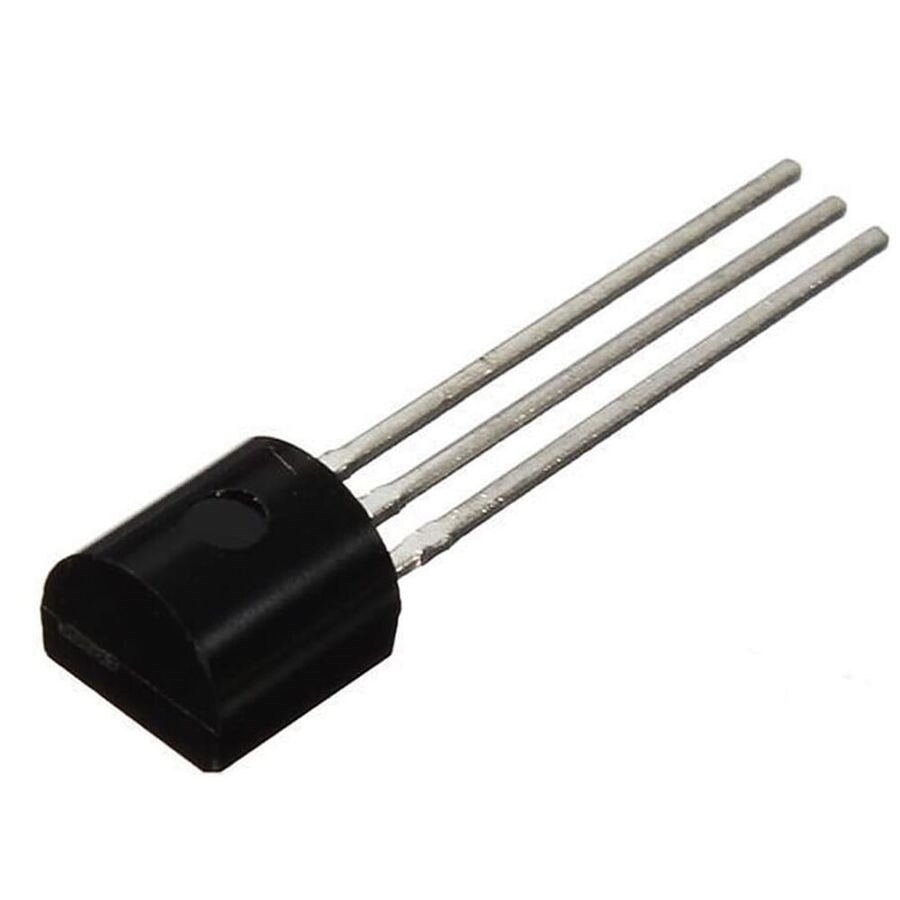 2N5401 PNP Transistor: Pinout, Datasheet, and Equivalents
2N5401 PNP Transistor: Pinout, Datasheet, and Equivalents06 July 202123872
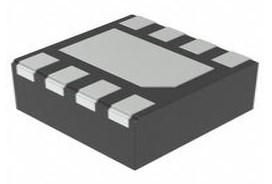 TPS22965NQWDSGRQ1 On-Resistance Load Switch: Circuit, Pinout, and Datasheet
TPS22965NQWDSGRQ1 On-Resistance Load Switch: Circuit, Pinout, and Datasheet08 April 20221008
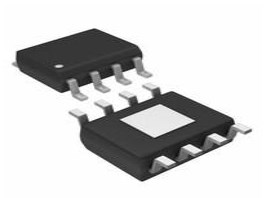 L5973D:35V, 250kHz, Pinout and Datasheet
L5973D:35V, 250kHz, Pinout and Datasheet07 March 20221327
![2N3053 BJT Transistor: Datasheet, Pinout, Circuit [FAQ&Video]](https://res.utmel.com/Images/Article/73b60587-50f2-45df-b152-447f4f044b9f.jpg) 2N3053 BJT Transistor: Datasheet, Pinout, Circuit [FAQ&Video]
2N3053 BJT Transistor: Datasheet, Pinout, Circuit [FAQ&Video]04 May 20223361
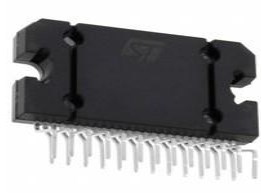 TDA7850 Amplifier: Package, Pinout, and Datasheet
TDA7850 Amplifier: Package, Pinout, and Datasheet27 October 202111209
 dsPIC33EV32GM104 TIML: Digital Signal Controller Datasheet Overview
dsPIC33EV32GM104 TIML: Digital Signal Controller Datasheet Overview29 February 2024122
 CD4001BE: Overview, Applications and Datasheet
CD4001BE: Overview, Applications and Datasheet09 November 20231469
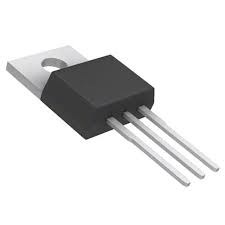 LM7905CT Voltage Regulator: Application, Specification, Datasheet
LM7905CT Voltage Regulator: Application, Specification, Datasheet07 June 20212874
 How do Inductors Work?
How do Inductors Work?27 October 202513793
 Microwave Diode: Introduction and Types
Microwave Diode: Introduction and Types07 January 202121652
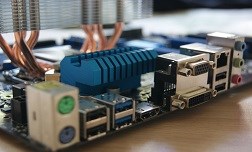 -5V, -3V, How is the Negative Voltage Generated? Attached Circuit Analysis and Scheme
-5V, -3V, How is the Negative Voltage Generated? Attached Circuit Analysis and Scheme13 September 20227576
 Tech Giants Accelerate In-House Semiconductor Design, Threatening Fabless Chipmakers
Tech Giants Accelerate In-House Semiconductor Design, Threatening Fabless Chipmakers27 September 20231520
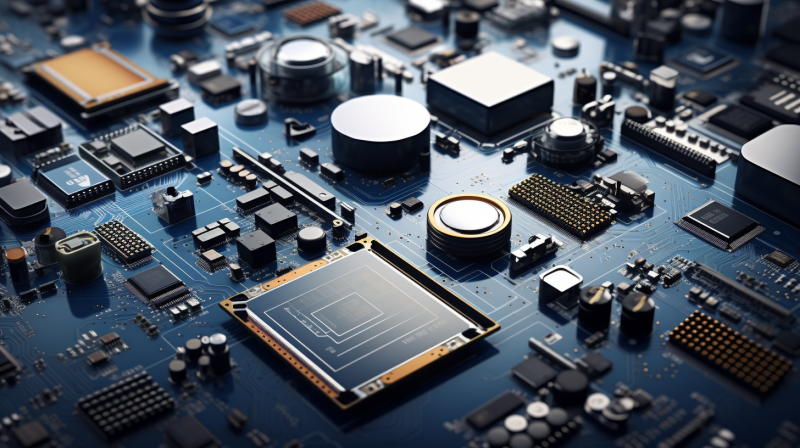 Semiconductor Market Predicted to Witness Significant Growth by 2023
Semiconductor Market Predicted to Witness Significant Growth by 202319 September 20231784
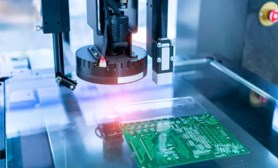 AC Contactor: What is Self-Locking?
AC Contactor: What is Self-Locking?01 March 20229430
 Introduction to BAW Filter
Introduction to BAW Filter25 September 20219350
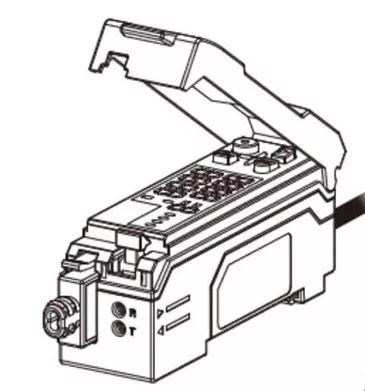 Basic Introduction to Color Sensor
Basic Introduction to Color Sensor23 December 202012033
STMicroelectronics
In Stock
United States
China
Canada
Japan
Russia
Germany
United Kingdom
Singapore
Italy
Hong Kong(China)
Taiwan(China)
France
Korea
Mexico
Netherlands
Malaysia
Austria
Spain
Switzerland
Poland
Thailand
Vietnam
India
United Arab Emirates
Afghanistan
Åland Islands
Albania
Algeria
American Samoa
Andorra
Angola
Anguilla
Antigua & Barbuda
Argentina
Armenia
Aruba
Australia
Azerbaijan
Bahamas
Bahrain
Bangladesh
Barbados
Belarus
Belgium
Belize
Benin
Bermuda
Bhutan
Bolivia
Bonaire, Sint Eustatius and Saba
Bosnia & Herzegovina
Botswana
Brazil
British Indian Ocean Territory
British Virgin Islands
Brunei
Bulgaria
Burkina Faso
Burundi
Cabo Verde
Cambodia
Cameroon
Cayman Islands
Central African Republic
Chad
Chile
Christmas Island
Cocos (Keeling) Islands
Colombia
Comoros
Congo
Congo (DRC)
Cook Islands
Costa Rica
Côte d’Ivoire
Croatia
Cuba
Curaçao
Cyprus
Czechia
Denmark
Djibouti
Dominica
Dominican Republic
Ecuador
Egypt
El Salvador
Equatorial Guinea
Eritrea
Estonia
Eswatini
Ethiopia
Falkland Islands
Faroe Islands
Fiji
Finland
French Guiana
French Polynesia
Gabon
Gambia
Georgia
Ghana
Gibraltar
Greece
Greenland
Grenada
Guadeloupe
Guam
Guatemala
Guernsey
Guinea
Guinea-Bissau
Guyana
Haiti
Honduras
Hungary
Iceland
Indonesia
Iran
Iraq
Ireland
Isle of Man
Israel
Jamaica
Jersey
Jordan
Kazakhstan
Kenya
Kiribati
Kosovo
Kuwait
Kyrgyzstan
Laos
Latvia
Lebanon
Lesotho
Liberia
Libya
Liechtenstein
Lithuania
Luxembourg
Macao(China)
Madagascar
Malawi
Maldives
Mali
Malta
Marshall Islands
Martinique
Mauritania
Mauritius
Mayotte
Micronesia
Moldova
Monaco
Mongolia
Montenegro
Montserrat
Morocco
Mozambique
Myanmar
Namibia
Nauru
Nepal
New Caledonia
New Zealand
Nicaragua
Niger
Nigeria
Niue
Norfolk Island
North Korea
North Macedonia
Northern Mariana Islands
Norway
Oman
Pakistan
Palau
Palestinian Authority
Panama
Papua New Guinea
Paraguay
Peru
Philippines
Pitcairn Islands
Portugal
Puerto Rico
Qatar
Réunion
Romania
Rwanda
Samoa
San Marino
São Tomé & Príncipe
Saudi Arabia
Senegal
Serbia
Seychelles
Sierra Leone
Sint Maarten
Slovakia
Slovenia
Solomon Islands
Somalia
South Africa
South Sudan
Sri Lanka
St Helena, Ascension, Tristan da Cunha
St. Barthélemy
St. Kitts & Nevis
St. Lucia
St. Martin
St. Pierre & Miquelon
St. Vincent & Grenadines
Sudan
Suriname
Svalbard & Jan Mayen
Sweden
Syria
Tajikistan
Tanzania
Timor-Leste
Togo
Tokelau
Tonga
Trinidad & Tobago
Tunisia
Turkey
Turkmenistan
Turks & Caicos Islands
Tuvalu
U.S. Outlying Islands
U.S. Virgin Islands
Uganda
Ukraine
Uruguay
Uzbekistan
Vanuatu
Vatican City
Venezuela
Wallis & Futuna
Yemen
Zambia
Zimbabwe






















